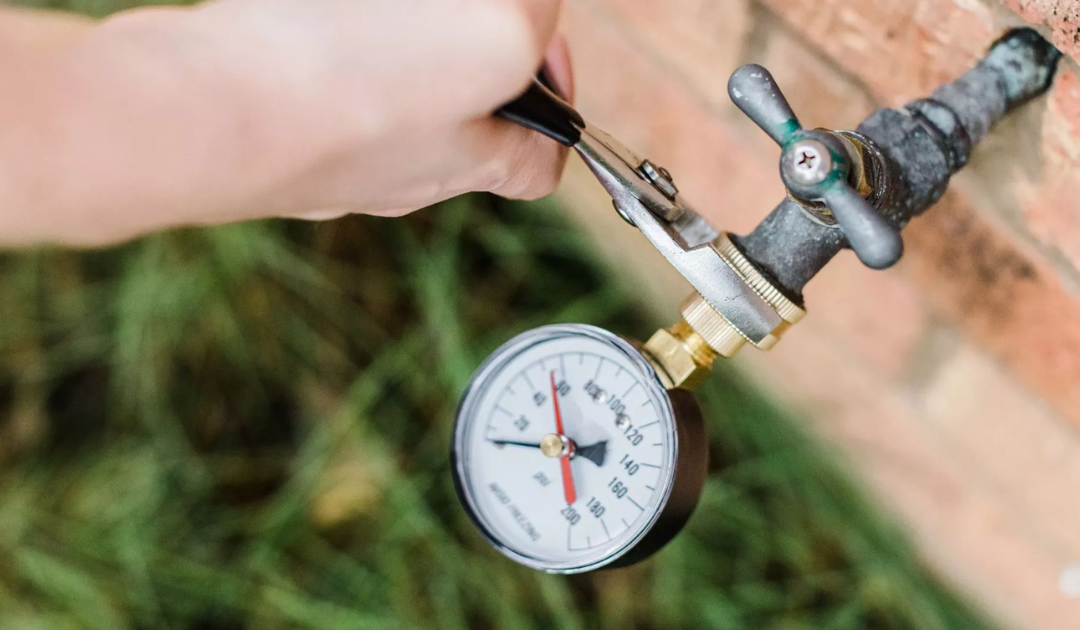An In-Depth Guide to Resolving Low Water Pressure in Your Home
An In-Depth Guide to Resolving Low Water Pressure in Your Home
Blog Article
Just how do you actually feel in relation to Low Water Pressure in the House??

Low tide stress in your house can be a frustrating trouble, influencing everything from bathing to cleaning meals. If you're experiencing weak water circulation, there are several feasible reasons and options to explore. In this guide, we'll go over typical reasons for low tide pressure and sensible steps to resolve the issue properly.
Intro to Low Water Stress
Low tide pressure happens when the flow of water from your taps, showers, and other fixtures is weak than usual. This can make daily tasks extra challenging and less reliable. Understanding the root causes of low tide pressure is important to locating the ideal remedy.
Common Reasons For Low Tide Stress
Faulty Stress Regulators
Pressure regulators are accountable for maintaining constant water pressure in your house. If they malfunction, it can cause low tide stress or irregular flow throughout your home.
Metropolitan Water Supply Issues
In some cases, the issue lies outside your home. Local water system concerns, such as main line leakages or upkeep work, can temporarily reduce water pressure in your area.
Pipe Obstructions
Over time, pipes can become clogged with mineral deposits, sediment, or particles, limiting the flow of water. This is an usual concern in older homes with galvanized steel pipes.
Rust
Deterioration within pipes can bring about leakages and lowered water stress. Corrosion buildup can tighten water flow, especially in aging plumbing systems.
Exactly How to Diagnose Low Water Pressure
Checking Pipes
Examine visible pipes for indications of leakages, deterioration, or blockages. Take notice of any type of uncommon sounds, such as knocking or rattling pipelines, which could suggest issues within the plumbing system.
Consulting with a Plumber
If you're incapable to determine the reason for low tide pressure, take into consideration employing an expert plumber to perform a thorough assessment. They can determine underlying issues and recommend proper remedies.
Inspecting Taps and Components
Start by examining the water pressure at various taps and fixtures throughout your home. If the issue is separated to details areas, it may suggest local troubles.
Do It Yourself Solutions to Fix Low Water Stress
Flushing Hot Water Heater
Sediment accumulation in the water heater can limit flow and decrease efficiency. Purging the container regularly helps eliminate debris and preserve optimum performance.
Examining Pressure Regulatory Authority
Ensure that the stress regulatory authority is operating correctly. Changing or changing the regulator can assist recover proper water stress throughout your home.
Cleansing Aerators and Showerheads
Natural resources can build up in aerators and showerheads, reducing water circulation. Eliminate and clean these elements on a regular basis to improve water pressure.
Clearing Up Clogs in Pipeline
For small blockages, attempt making use of a plumbing snake or chemical drain cleaner to clear blockages in pipes. Be cautious when utilizing chemicals and adhere to safety guidelines.
When to Call an Expert Plumber
If do it yourself initiatives fall short to resolve the concern or if you suspect significant plumbing issues, it's finest to look for aid from a licensed plumber. They have the competence and devices to address intricate problems safely and properly.
Preventive Measures to Preserve Water Stress
Installing a Stress Booster
Consider installing a pressure booster pump to enhance water pressure in locations with consistently low circulation. This can be specifically helpful for multi-story homes or residential or commercial properties with high-demand fixtures.
Monitoring Water Usage
Bear in mind water use behaviors and stay clear of ill-using the plumbing system. Basic changes, such as staggering showers and laundry lots, can aid maintain appropriate water stress.
Regular Maintenance
Set up regular maintenance for your plumbing system to stop concerns such as rust, leaks, and clogs. Resolving small issues early can help avoid more considerable repair work later.
Final thought
Managing low tide pressure can be frustrating, but recognizing the underlying causes and executing appropriate remedies can recover optimum flow throughout your home. Whether it's cleaning aerators, evaluating pipelines, or speaking with a plumber, taking proactive actions can guarantee a constant supply of water for your daily requirements.
How to Fix Low Water Pressure In Your Home
Municipal Water Supply Issues
Scheduled maintenance, high demand, and water main breaks are all potential causes for low water pressure within a city or county’s water lines. While there’s not much you can do to personally fix a problem with your city or county’s water supply system, you can play a big role in documenting the issue and alerting those who can.
How to fix it:
Ask your neighbors if they are experiencing any issues with low water pressure. If multiple homes are affected, it’s likely related to the city’s water line. Contact the local Water Authority to see if there is any maintenance taking place that might be affecting your supply. Also let them know of your specific issues. If other homeowners report the same issues, they’ll know that there could be a larger issue to look into. Faulty Fixtures
A damaged or clogged shower head, faucet or appliance is the first thing we’d suggest checking, especially if low water pressure appears to be isolated to a specific area of your home.
How to fix it:
First, turn off the main water supply to your home. Check the affected appliances for build-up or debris. In the case of a faucet, you can simply unscrew the aerator at the tip of the faucet. Showerheads should be fully detached from the water pipe. While the appliances are detached, you may want to check the water supply to determine if the fixtures were in fact the issue. To clean, soak the showerhead or aerator in vinegar and brush off any visible debris. Reattach the fixtures and check the water pressure again. If it is still low, there is likely a deeper issue at hand, which can be determined by a professional plumber. Pipe Obstructions
Mineral deposits, rust or other debris within water pipes can lead to blockages or corrosion over time.
How to fix it:
When you think of a clog, you probably think of a drain clog. While there are many DIY solutions to clearing a drain, clogs in a water pipe will almost always require the help of a professional plumber. A plumber will be able to locate the affected pipe and clean out any debris or mineral deposit buildup. In severe cases, the pipe may need to be replaced. Your plumber might also recommend a water softening system to remove the minerals from your home’s water supply that can contribute to pipe blockages over time.
Plumbing Leak
Undetected water line leaks can divert water away from your residential pipes, reducing the water pressure in your fixtures.
How to fix it:
Check your water meter by turning off all water sources and monitoring the meter for any movement, which could be a clear indicator of a potential leak. Check all visible pipes for signs of leaking, including water stains, active dripping or damp spots around the pipe. Inspect fixtures, including faucets and showerheads, for any drips. Test the pressure but recording the pressure with the main water valve shut off. Leave off for a few hours and test again. A significant drop in pressure is a clear sign of a leak. https://kiddcoplumbing.com/plumbing-blog/how-to-fix-low-water-pressure/

We hope you enjoyed reading our part about 9 Reasons for Low Water Pressure in Your House. Thanks for finding the time to read through our article post. You should take the opportunity to distribute this article if you enjoyed reading it. Kudos for your time. Come back soon.
Schedule An Appointment Report this page